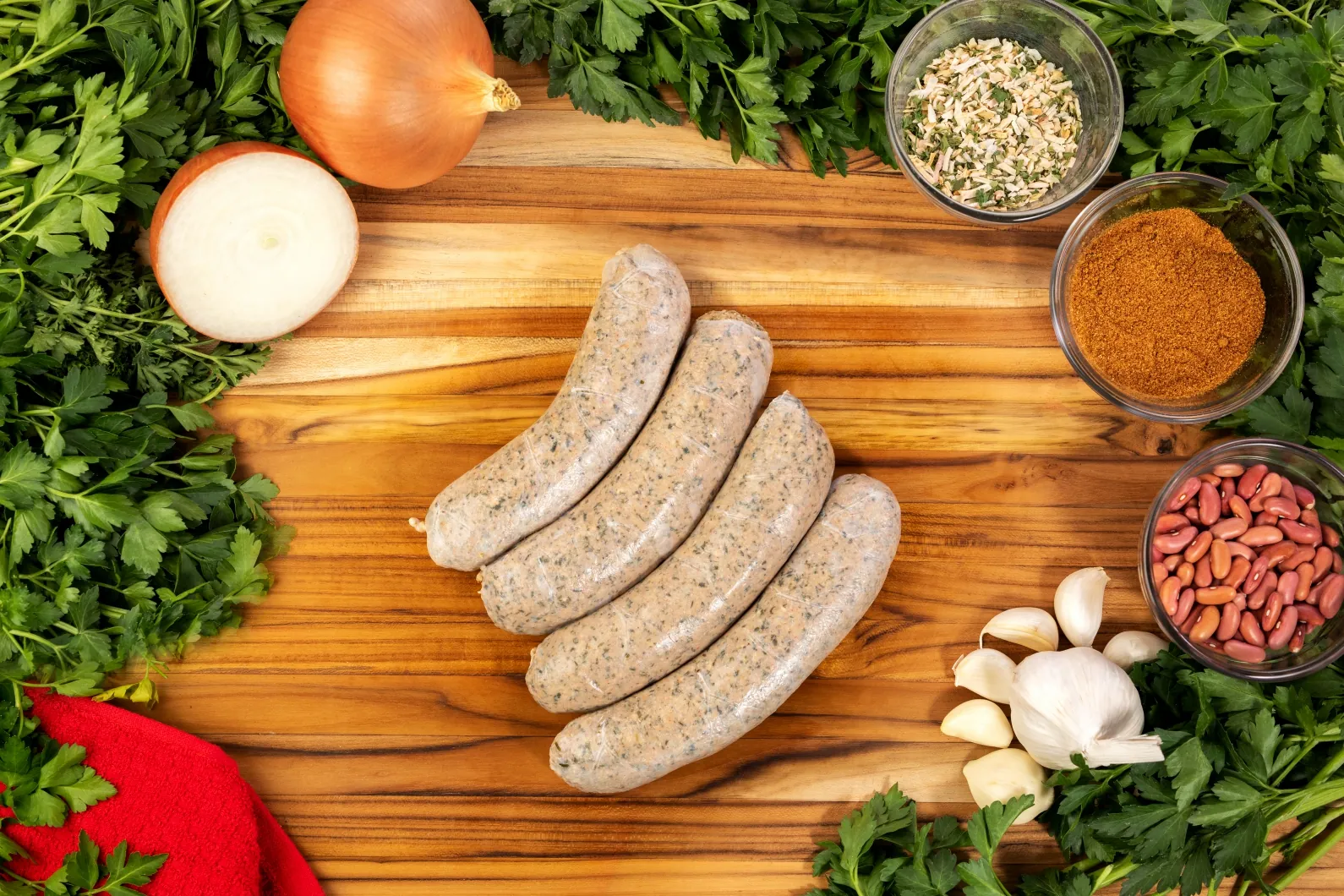Ask an andouille maker what he uses to smoke his product and he is never going to reply "Just wood." More than likely he won’t even tell you unless you are a special friend. The most you can expect if you are not is a sly wink and a knowing smile. For the smoking process is the artistry of andouille.
No matter what the ingredients that are stuffed into no matter what sized casings, it’s the smoking that brings the customers back for more.
As the customers usually start out by being casual customers and wind up being rabid fans, it is small wonder that so much thought and effort is put into the smoking of the meat. And smaller wonder it is usually a closely-guarded secret.
It is just as easy to ruin the meat as it is to turn it into a perfect andouille. A producer has to know exactly how much wood to use for the amount of andouille, the size of the links – even the weather. Then he has to know exactly how long it will take to get the desired effect of color and proper cooking.
He has to know whether or not the fire is too high – it must never flare – or not high enough. Over and above the wood and smoking are the sweet toppings sometimes added over the wood. As in the wood the proper amount to create the desired taste and color has to be used.
Many manufacturers who are best known for the color and taste of their andouille are those who add these special toppings. These are sugar (usually brown), molasses, pieces of cured sugar cane or even cane syrup.
So easily is the flavor of the meat affected that no fuel at all can be used to start the fire. Many times those things used to smoke by some are considered by others as only "starters" for their own choice of wood. This is sometimes the case with corncobs or willow wood.
There is one wood, though, about which everybody agrees. No pine. Surely, since pine is so easy to get there are those who have considered using it. But only once. Pine burns much too quickly, leaving the andouilles an unappetizing black color, and undersmoked despite their charred color.
Further, even one piece of pine, no matter how small, will taint the meat with a pine oil taste. As pine oil has never become a human delicacy, pine must be avoided at all costs.
Cypress, another fast-burner, is not acceptable, and nobody could be found who uses mimosa.
There are woods which are very good for smoking andouille, however, and whether used as blocks, sawdust, or in combination, can produce an excellent quality meat. These are, ideally, slow-burning, seasoned, fragrant woods – mostly hardwoods that have a certain body.
Among these favorites are pecan, oak, hickory, walnut, beech, hackberry, ash and willow.
In Val d’Ajol, France, a combination of beech and oak sawdust is used, those being easily-obtainable trees there. Since the Val d’Ajol andouille has its own festival every year and the small town is a proclaimed European andouille capitol, their choice of woods must be a good one.
Some large producers (none know in this immediate area) use an "artificial smoke" on their andouille. Of course there is nothing wrong with this – it is probably on par with the quick-aging of beer.
But making fully-smoked andouille is not easy. It takes too much technical knowledge. It is an art of trial and error, taste and acceptance, or rejection. Most of all it is knowing as much about wood as a carpenter.
There is no way to judge which are the best woods to use. Nor which are the best andouilles. Neither producers, customers, nor gourmets will ever agree. It is best simply to choose the producer who makes the andouille that suits your taste best, hope he lives to be 115, and never forsake him.











